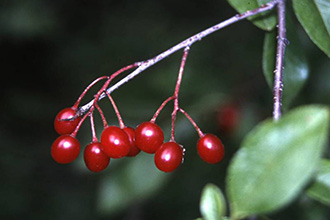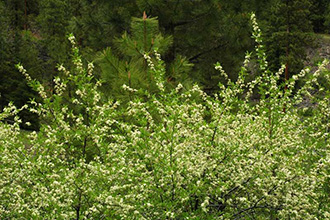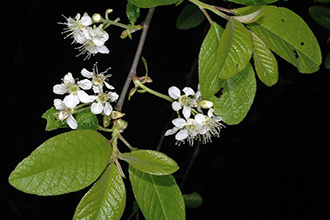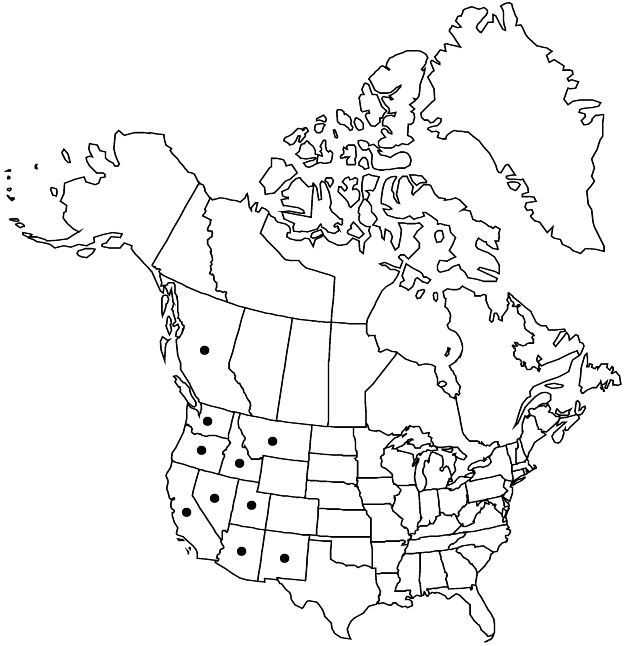Taxonomy: Kingdom - Plantae (plants). Subkingdom - Tracheobionta (vascular plants). Superdivision - Spermatophyta (seed plants). Division - Magnoliophyta (flowering plants). Class - Magnoliopsida (dicotyledons). Subclass - Rosidae. Order - Rosales. Family - Rosaceae (rose). Genus - Prunus L. Species - Prunus emarginata (Douglas) Eaton
Ecology: Bitter cherry is a generally shade intolerant species of sparse woods, riparian sites, and open areas where there is often evidence of past disturbance. Bitter cherry is seral following clearcutting, broadcast burning, and cattle grazing; plants decline in vigor and numbers as the forest canopy closes. Bitter cherry is most often found in cool, moist foothill, montane, or canyon habitats throughout its range. It grows best on moist soils with good drainage, but also grows in semishaded areas and on dry, exposed hillsides.



